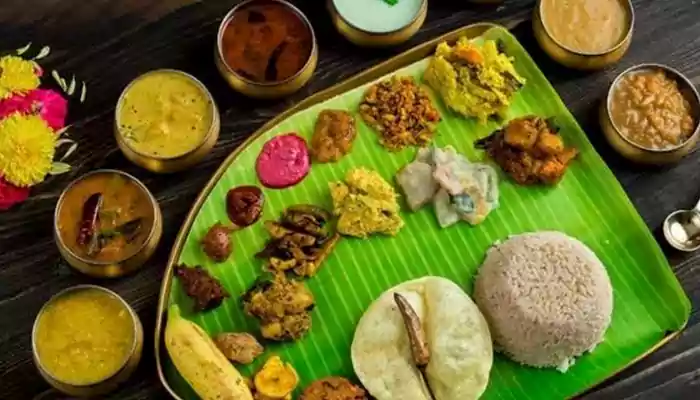World Coconut Day: Know The Significance of Coconuts in Kerala Cuisine

Savor the taste of Kerala cuisine on World Coconut Day: Where tradition meets culinary delight.
This World Coconut Day, September 2, let’s learn about the place that celebrates coconuts like no other – Kerala. The true essence of Kerala's gastronomic prowess lies in a humble yet extraordinary ingredient - the coconut. Kerala's cuisine, celebrated for its distinctive flavors, draws its soul from the versatile coconut, and how! Well, this significance transcends the boundaries of mere flavor, as it is deeply woven into the state's culture, history, and geography. Peel back the layers of Kerala's culinary heritage to unearth the profound significance of coconuts, revealing how they have shaped dishes and provided a unique character to the state's epicurean offerings.
Cultural and Historical Significance
The coconut palm, known locally as "thenga," is not merely a tree in Kerala; it is revered as the "tree of life." Coconuts hold a profound cultural and historical significance in the state. For generations, they have been used in religious rituals and as offerings to deities during festivals. The coconut is symbolic of purity, prosperity, and divine blessings, which are deeply ingrained in Kerala's culture and traditions.Versatility in Kerala Cuisine
Coconut Oil: The Cooking Marvel
Coconut oil is the undisputed cooking oil champion in Kerala. It's not merely a choice; it's a tradition deeply ingrained in the culture. The use of coconut oil imparts a distinct nutty fragrance and a subtle sweetness to the food. From frying and sautéing to tempering spices, coconut oil is the default option for chefs and home cooks alike.The Essential Coconut Milk
Coconut milk, a product of blending grated coconut with water, plays a pivotal role in enriching Kerala's culinary creations. It introduces a creamy texture and a touch of tropical sweetness to a wide range of dishes. Whether it's 'Ishtu' (a comforting potato stew), 'Korma,' or the renowned 'Curry,' coconut milk lends them a unique richness. It's equally indispensable in crafting delectable desserts such as 'Payasam' and 'Ada Pradhaman.'Coconut Gratings: The Crunchy Garnish
Kerala cuisine isn't just about flavors; it's also about textures. Freshly grated coconut is frequently used as a garnish, not just for aesthetic appeal but also to provide that delightful crunch and an explosion of coconut flavor. This small but crucial addition enhances the overall dining experience.Sambhar and Coconut: A Match Made in Culinary Heaven
Even the ubiquitous South Indian dish, Sambhar, gets a distinct Kerala twist. Here, coconut joins the party, adding a sweet and creamy undertone to this beloved dish. It's a perfect example of how Kerala seamlessly integrates coconut into its culinary traditions.Chutneys: Coconut's Playground
Keralites are masters of chutney-making, and coconut plays a starring role in this arena. Whether it's the fiery 'Coconut Red Chutney' or the refreshing 'Coconut Green Chutney,' these condiments owe their deliciousness to the versatile coconut.The Unbeatable Coconut 'Thorans'
'Thoran,' a quintessential Kerala dish, showcases the artistry of blending finely chopped vegetables with coconut. Tempered with mustard seeds and curry leaves, 'Thorans' celebrates a symphony of textures and flavors, with coconut lending that signature Kerala touch.Sweet Delights: Coconut in Desserts
Kerala's dessert repertoire would be incomplete without the presence of coconut. 'Unniyappam,' 'Elai Adai,' 'Rice Payasam,' and 'Coconut Laddu' all feature coconut in various forms, delivering irresistible treats that capture the essence of Kerala.The Divine 'Puttu' and 'Appam'
Kerala's breakfast staples, 'Puttu' and 'Appam,' rely on coconut for their distinctive flavors. 'Puttu,' steamed rice cakes, are often served layered with coconut and paired with ripe bananas. 'Appam,' lacy pancakes with a subtle coconut essence, is a morning delight for many Keralites.Spice balance
Kerala cuisine is renowned for its expert use of spices. Coconuts play a pivotal role in balancing the fiery and pungent flavors of spices like black pepper, cardamom, and red chili. Coconut milk, in particular, serves as a soothing agent, harmonizing the heat in curries, and creating a perfect blend of flavors that is both spicy and creamy.Best of thenga dishes
Appam and Stew: Soft, lacy appams paired with a fragrant coconut milk stew are a breakfast delight in Kerala. Simple. IconicKerala Sadya: This grand feast showcases 26 dishes, most of which contain coconuts. The combination of rice, various curries, pickles, and payasam (a dessert) all feature coconut in various forms, creating a culinary extravaganza.
Karimeen Pollichathu: This famous Kerala dish is marinated in a blend of spices and wrapped in banana leaves with grated coconut before being steamed or roasted. You must have it to believe it.
So, the next time you relish Kerala cuisine, take a moment to appreciate its coconut flavors!












